Student Blog
Classes

Cooking From All Woks of Life ⟩
December 5, 2016, by Erwin
Classes What are OS/OT?
For my last lab in the adult rehabilitation course, my classmates and I had the opportunity to cook using adaptive equipment. Not only was this lab delicious, but it was also educational!
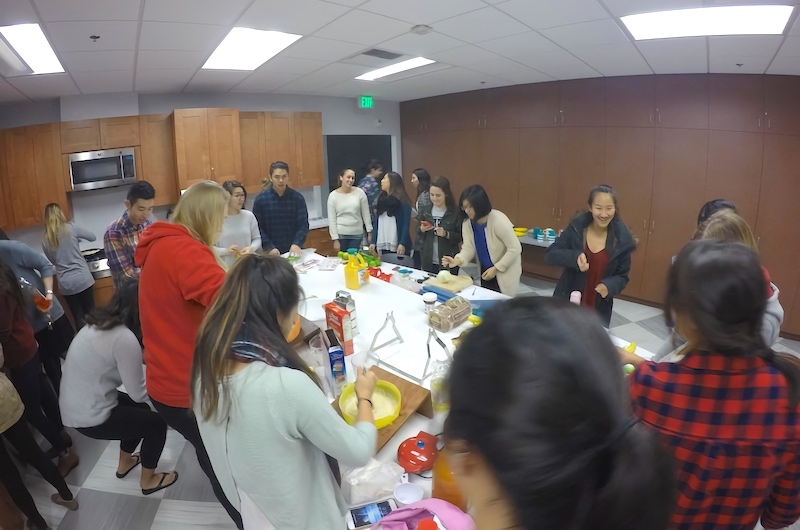
USC OT students getting ready to cook!
Sometimes, individuals can have difficulty completing cooking and feeding tasks after an injury. However, this does not mean they are not capable of cooking or feeding. Adaptive equipment gives individuals the opportunity to cook and feed independently.
In this picture, my classmates, Vanessa and Jamie, are using a rocker knife to cut mushrooms. Rocker knifes are especially effective for individuals that only have use of one arm. Rocker knifes use a rocking motion instead of a back-and-forth motion so that they are able to cut with one hand!
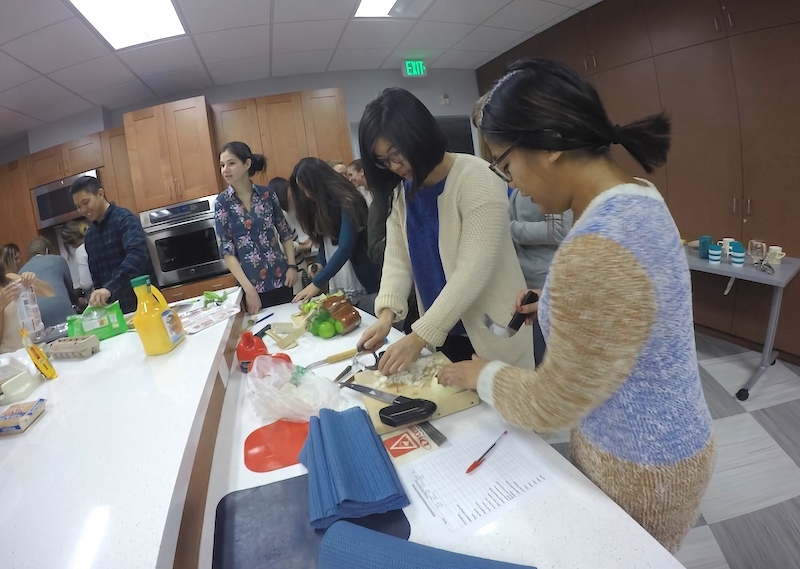
Students using a rocker knife!
In this picture, my classmates Shannon, Annie, and Amy are stirring pancake batter in a bowl holder. This device anchors the bowl so that someone with limited strength, in-coordination, or is only able to use one arm can meal prep in a bowl!
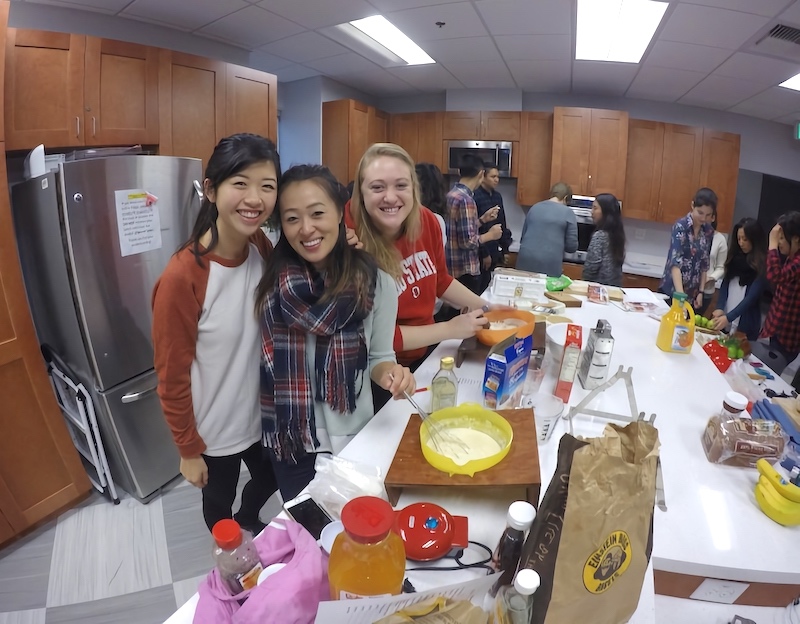
Students getting ready to make pancakes!
Even little things you may not notice can help individuals with a disability cook or feed. Our white countertops are not only stylish, but also have a purpose. People with low vision can have difficulty detecting items; so having a surface that provides high contrast and no patterns is helpful. Even the height of the counter is important. Having a counter that is at waist level is useful for people that use a wheelchair so they can work at an appropriate height.
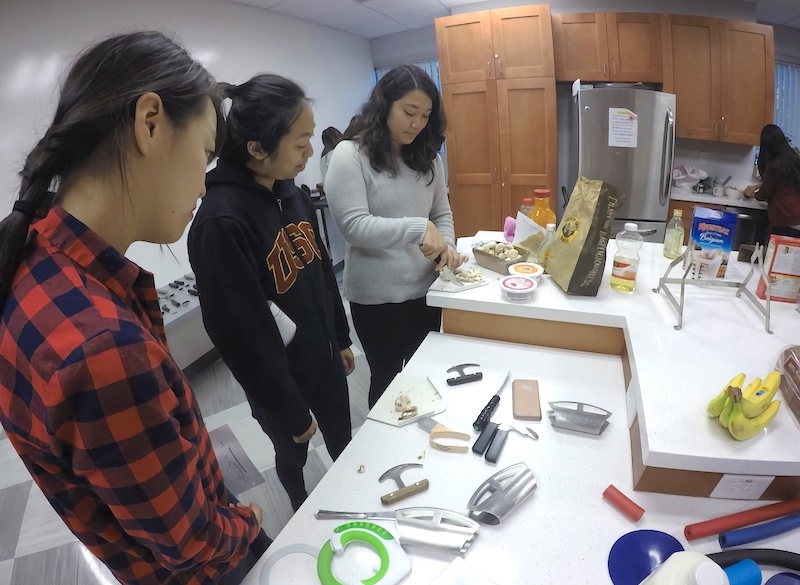
Showing off our universal design kitchen!
All of these devices and modifications are just the tip of the iceberg. Having a disability does not mean you cannot do something, and as occupational therapists, we should support independence for our clients!

Bon Appetit!
⋯

The Community Matters! ⟩
December 5, 2016, by Alyssa
Classes Community What are OS/OT?
Currently, I am taking OT 537: Occupation-Centered Programs for the Community! Specifically, this class is about finding a need within the community and developing a program to address it. With this purpose, you become familiar with the process of planning and evaluating a program, proposal writing, and addressing a prevalent health need. With an understanding and love for meaningful occupation, what better way to apply this knowledge and passion than to build and cultivate a program design! My classmate, Lauren, and I both have a strong interest in health promotion and wellness!
With this interest, we decided to research and develop a program within the workplace to address busy professionals with or at risk for developing hypertension. Our purpose was to educate and collaborate with this population in how to self-manage their health needs, incorporate healthy lifestyle habits into their daily routines, and engage in purposeful, occupation-based activities.
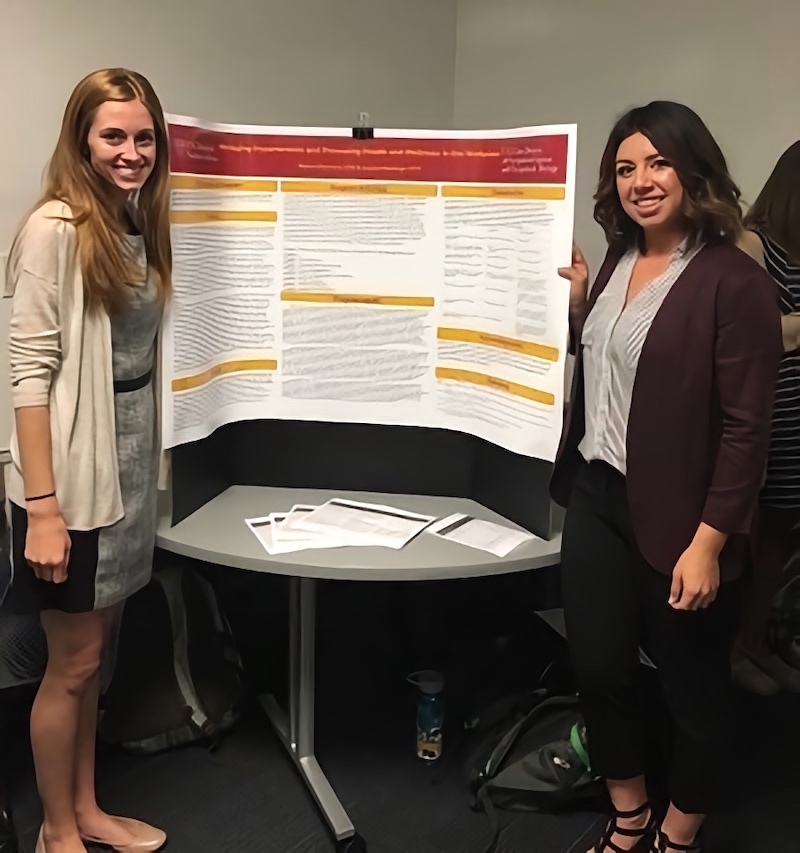
Our Poster!
In addition, if you would like to learn more about the other courses offered within in the entry-level Master’s program, I highly encourage you to do so. 😊
⋯

Cardboard Creativity ⟩
November 14, 2016, by Jessica
Classes What are OS/OT?
Hello again!
As you may have noticed from my past few posts about the pediatrics course, it is very hand-on and interactive. Each week our professors try to make the content come to life for us, so it really makes the material stick. This past week, we focused on learning about adaptive seating and mobility devices (i.e., walkers, wheelchairs, scooters, etc.) especially built for children with disabilities. As you may have predicted, customized adaptive seating and mobility devices are REALLY expensive, and children often quickly grow out of their devices. What’s amazing is that there are organizations out there that specialize in building adaptive devices out of cardboard, since it is both cost-effective and customizable. I know what you’re thinking — cardboard, really? It sounds like it would be flimsy, but these professionals have found ways to reinforce the cardboard so it is sturdy and durable. Check out Adaptive Design Association, if you’re interested in learning more about this! They have some cool videos in their learning library for each step they take to make customized equipment with cardboard.
In the spirit of creativity (and competition), our professor asked us to choose any piece of equipment in the classroom and adapt it for a child with disabilities — using cardboard. After building it, we had to “sell it” by presenting an infomercial. These infomercials were hilarious, to say the least. Here’s a photo of my team’s adaptive design — we decided to adapt a scooter board by adding a cardboard back and strap in front for trunk support. Since this is for a child, we decided to add some fun decorations to make it look like a submarine, aka the “USS Chan.”

Yours for a low, low price of $19.99. Some assembly is required.
⋯

Feed Me! ⟩
November 7, 2016, by Jessica
Classes What are OS/OT?
This past week in pediatrics, we discussed OT’s role in feeding intervention. I knew OTs were involved in feeding, however I didn’t realize how common it is for OTs to address feeding in all types of pediatric settings — hospital, clinics, schools, etc. This can truly be a specialty area of practice, and you can get Advanced Practice in swallowing and feeding in the state of CA. In fact, one of our elective courses, OT 575 Dysphagia Across the Lifespan, counts for 24 of the 45 recommended hours of continuing education to obtain this advanced practice certification!
In lab, we were asked to practice feeding one another these kid-friendly foods, and analyze the different motor movements we were using while eating these foods of various textures. Also, it was a good opportunity to try baby food for the first time. Figured it might be a good idea to try something I would be feeding to someone else. What I learned: baby food takes like cold soup.
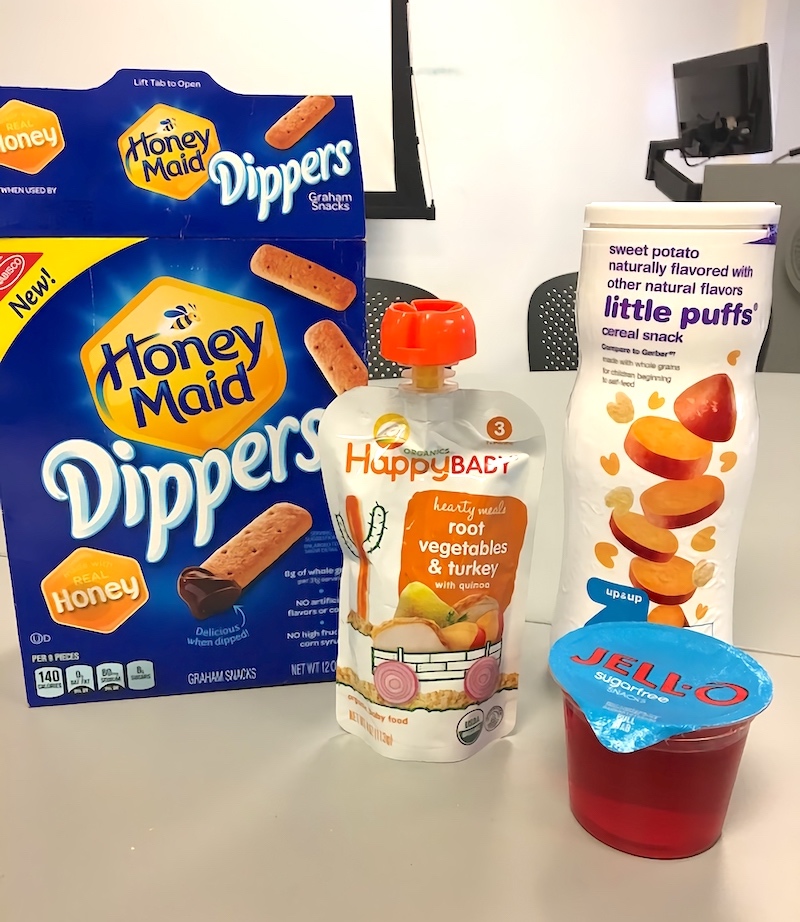
Kid-friendly foods
Trying new foods and going out to eat with friends and family is one of my favorite occupations. Food has always been a very communal experience for me. Growing up, my family would always eat our meals together around the table, and family get-togethers would always revolve around food. Nowadays, meal times are opportunities to reflect on the day with my fiancé or to reunite and connect with old friends. I love going out to eat at new restaurants to try food from different cultures. As a typically-developing human being who has never had issues with feeding or meal times, I take for granted that it is not always this easy for everyone.
This is where OTs come in — we can help children who have difficulties with feeding so that they can participate during family mealtimes. Whether it’s working on oral motor skills or getting children to eat a greater variety of foods, we have a pivotal role in helping families make mealtime a little more enjoyable.
⋯

Play All Day ⟩
November 1, 2016, by Jessica
Classes What are OS/OT?
Hey everyone!
I apologize for being offline for a while — things have been so busy this semester with midterms and events! I wanted to update you all about another one of the awesome resources we have here at USC — our pediatric therapy gym! We are so lucky to have the equipment and resources to be able to practice what we’re learning in an interactive, hands-on way.
A few weeks ago we had our Sensory Integration lecture and lab, where we got to learn about the theory behind Sensory Integration therapy and interventions we could use during treatment. For those of you who don’t know what Sensory Integration therapy is, it is both a theory and intervention based on USC alum’s Jean Ayres’ work. It focuses on how a child’s body integrates sensory information (vestibular, proprioceptive, and tactile) in order to navigate their environment effectively. Through Sensory Integration therapy, the goal is to facilitate an adaptive response, which is a successful goal-oriented action on the environment. For some children with sensory issues, their bodies and brains may not be integrating the sensory information from their environment effectively or efficiently, which can affect a child’s ability to participate in their occupations, such as play.
This is what I love about OT — what looks like “play” is so much more complex and layered than what it seems. And as OTs, we can use play as a means and ends in our treatment sessions with children, since play is one of their main occupations!
Here are some photos from our Sensory Integration lab, where we actually got to jump on all of the equipment and try it out for ourselves! Doesn’t it look like hard work?
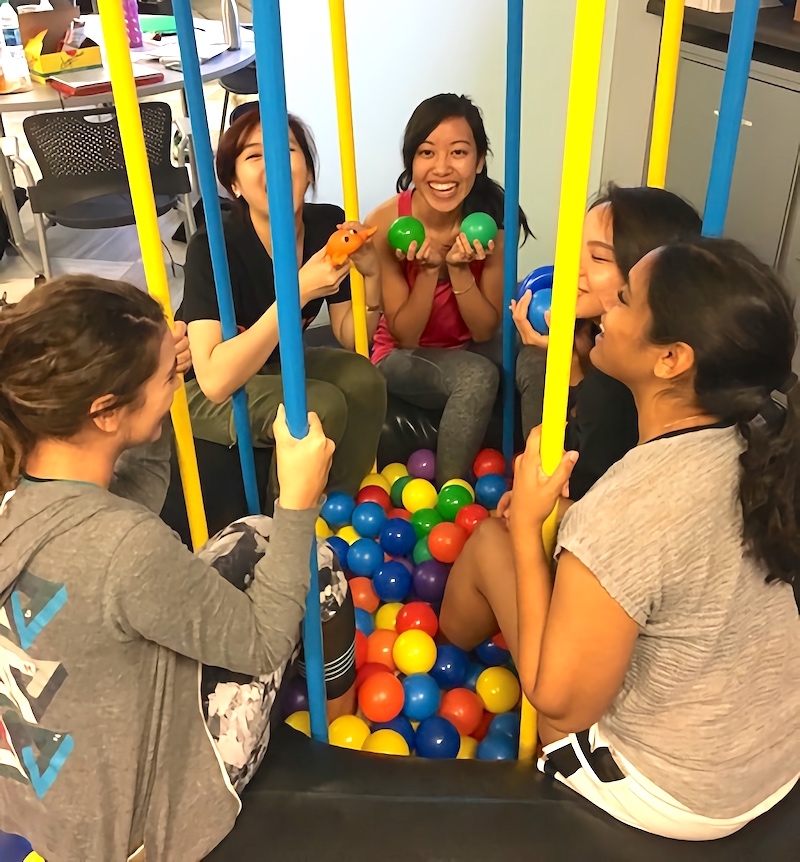
Having a ball!

Just rolling through life
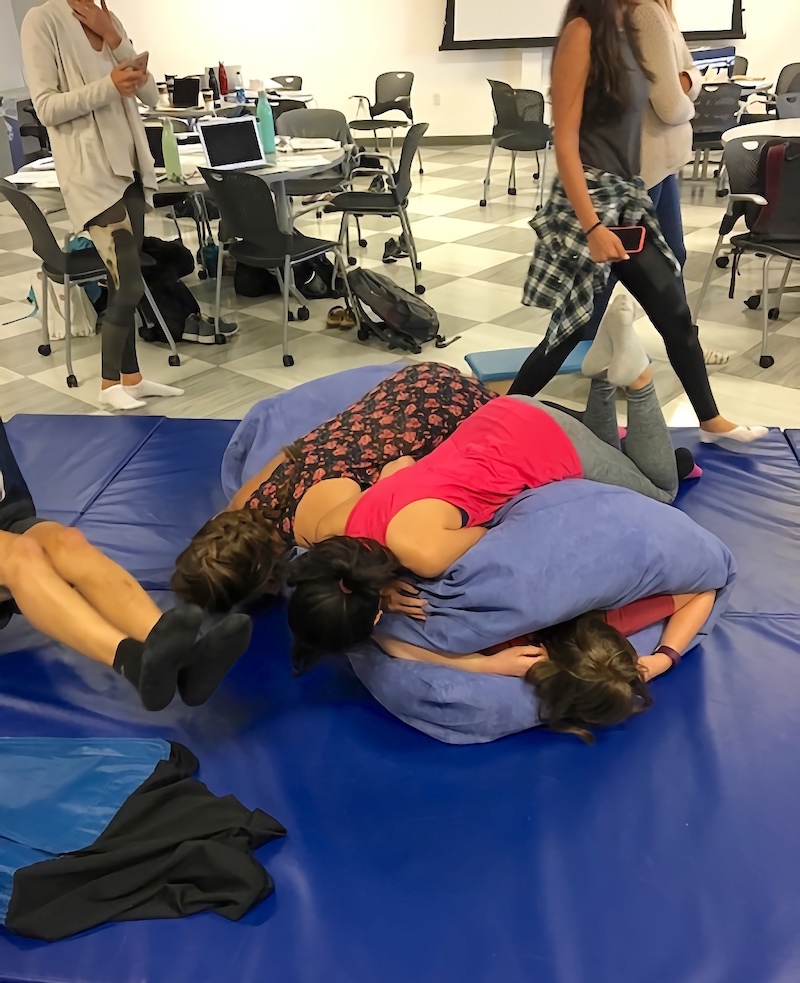
Feeling the (deep) pressure of OT school
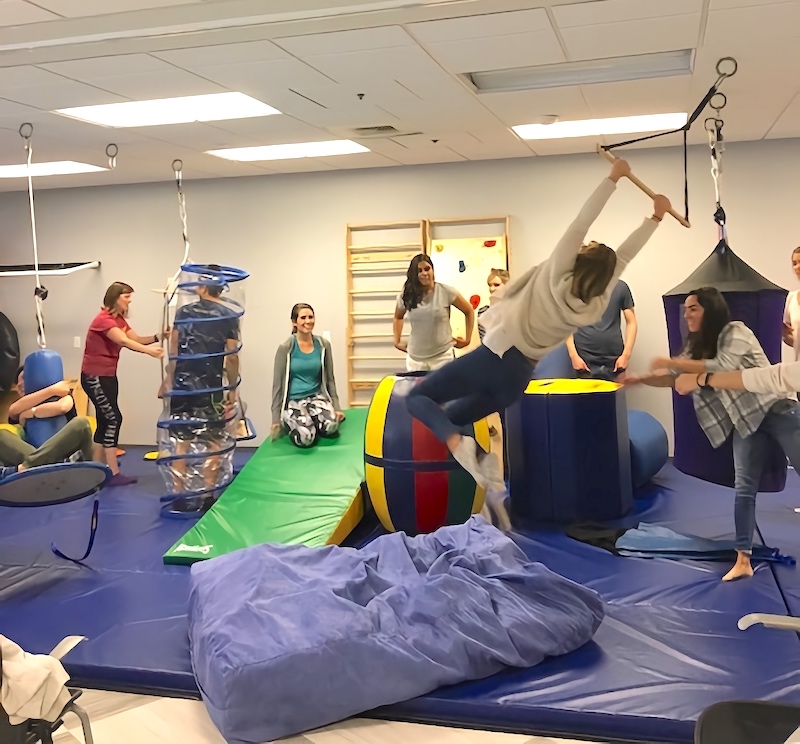
Hanging out
⋯





